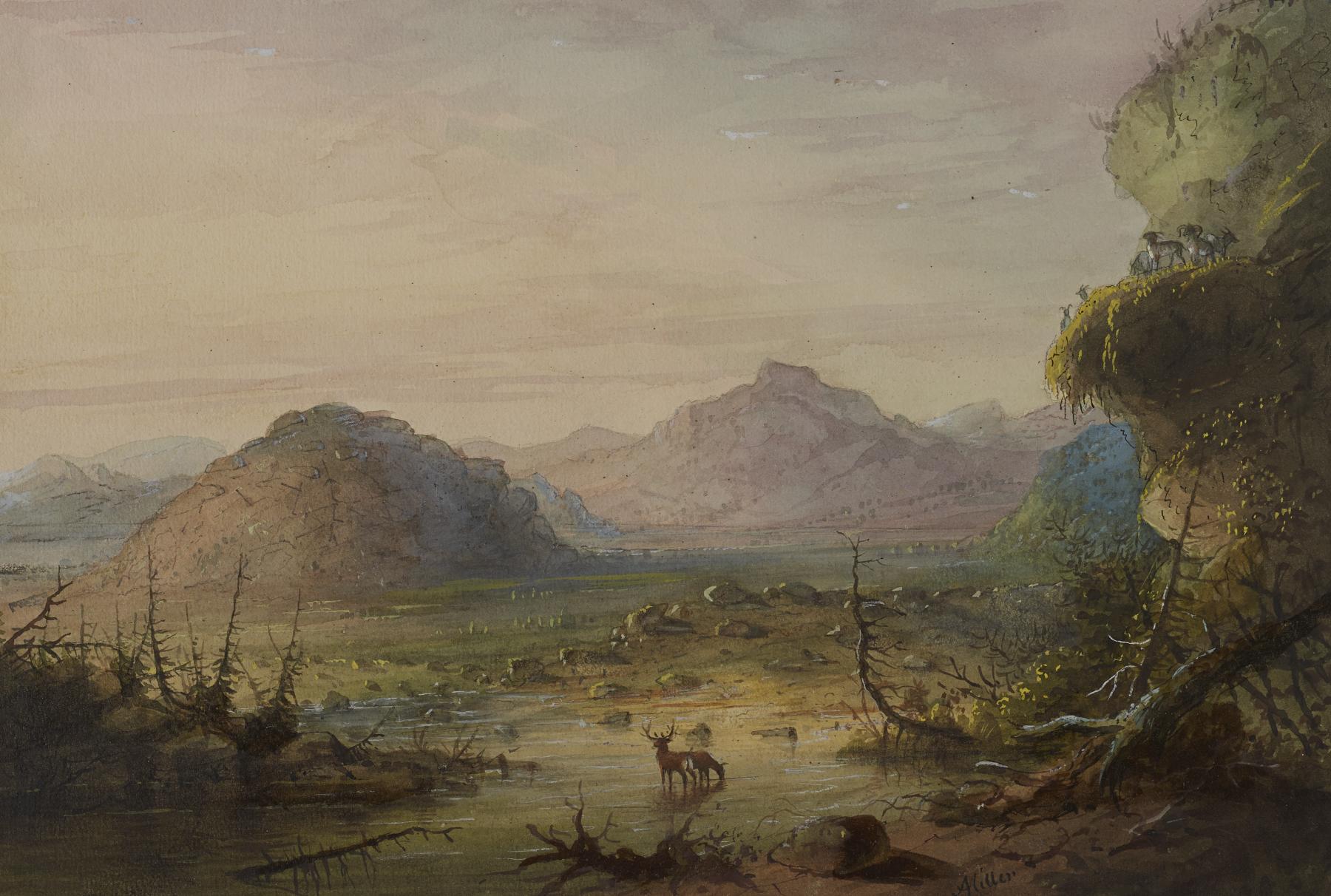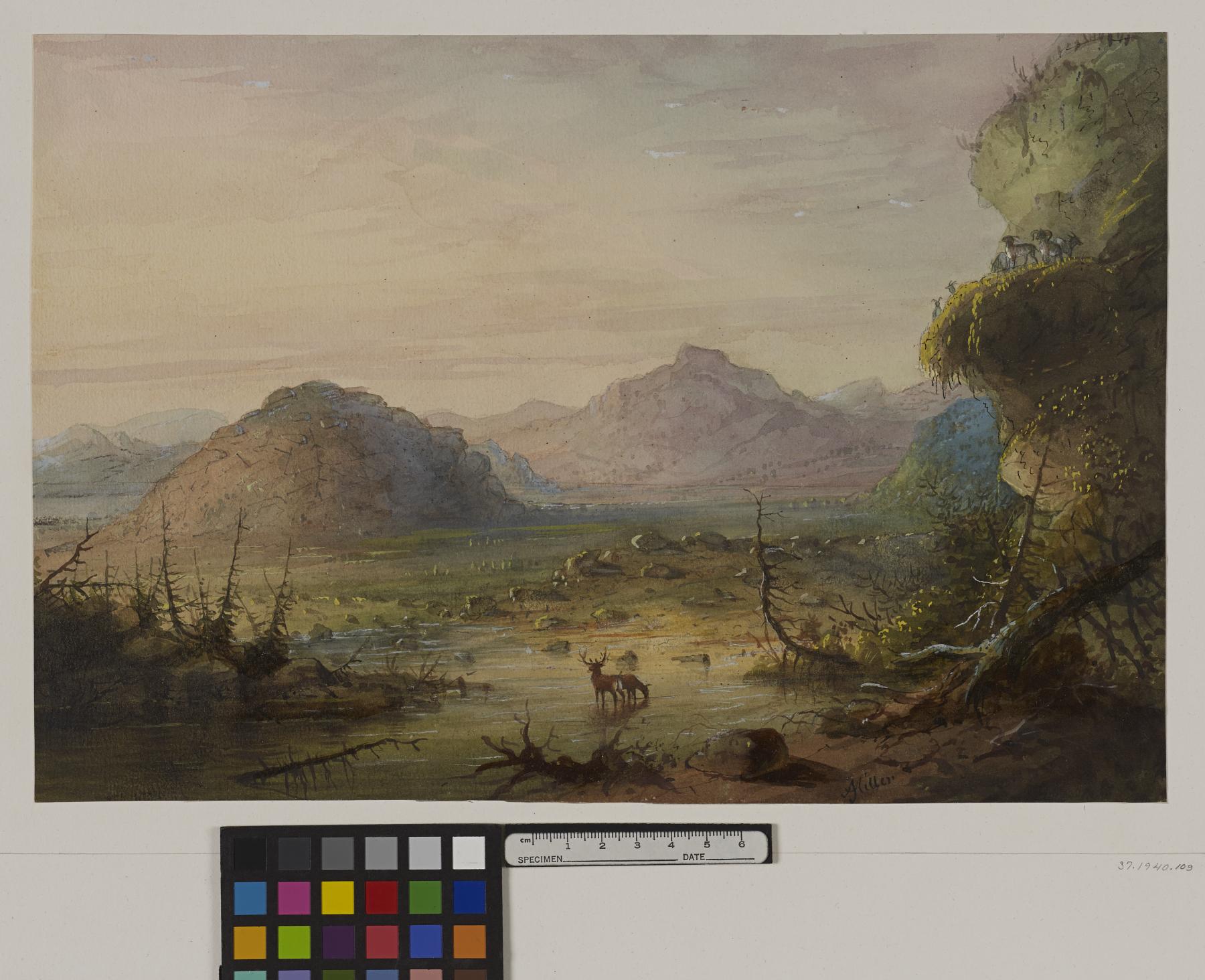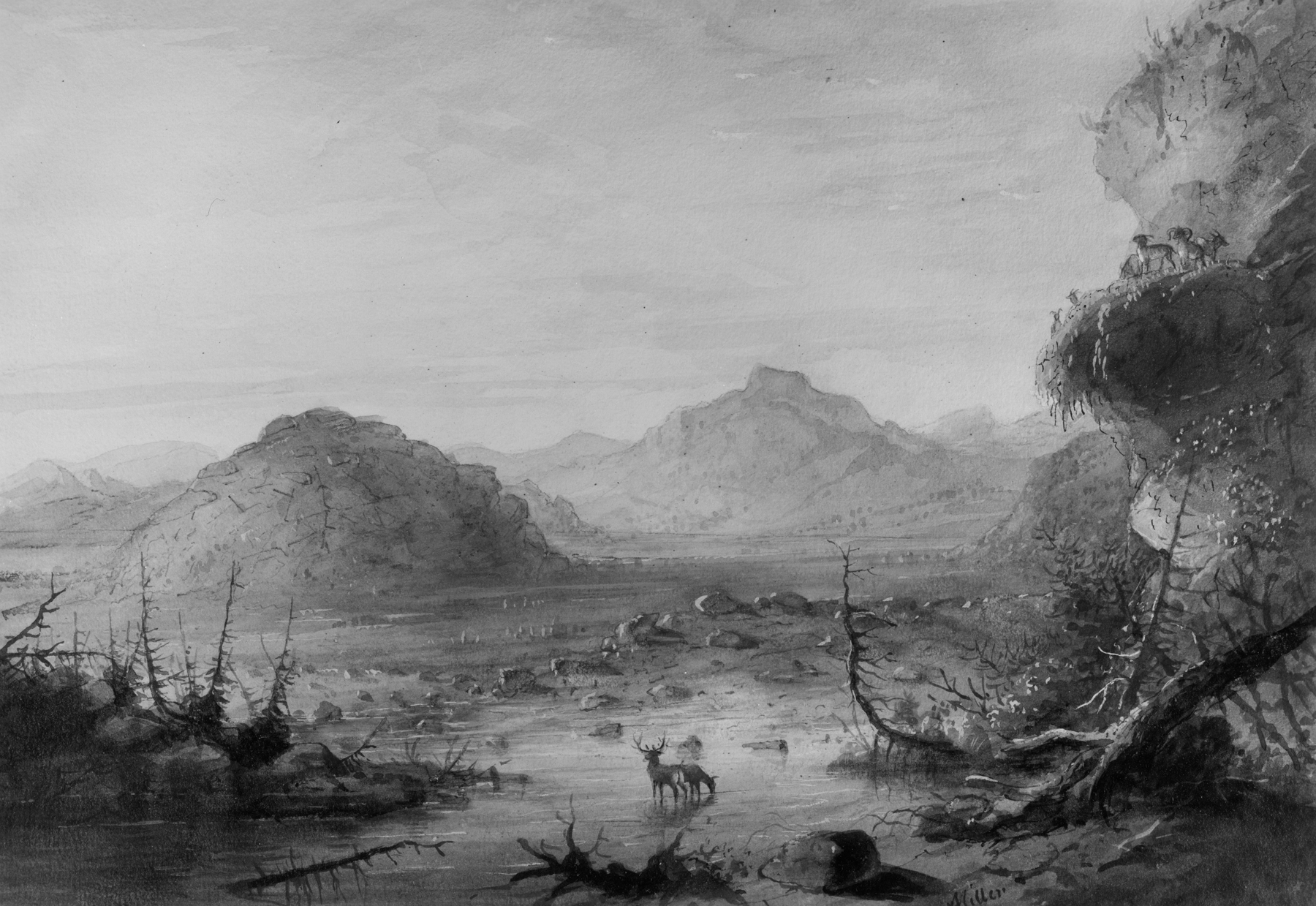Rock Formations
(18th and 19th Centuries )
Extracts from Alfred Jacob Miller’s original text, which accompanied his images of Native Americans, are included below for reference.
"The scene here presented is remarkable, huge mounds of rock rise suddenly out of the prairie, and near their summits and scattered about their sides were boulders seemingly detached,- while the dry sand plain below is covered with gnarled bushes of the Artemesias. From these plants, found here in the greatest abundance, the atmosphere is strongly impregnated with the smell of camphor and turpentine. Theis whole region from its elevation and purity of air is said to be favorable to the resoration of health, particularly to consumptives,- the respiration of air so highly charged with aromatic plants no doubt contributes to this influence. Our hunters had great sport here with the Mountain sheep, wherever they could get access to them. In ascending the rocks in herds, they gave notice of their locality by the loose stones that came rattling along the declivities, and thown down by them in running - when in good order the meat was similar to our mountain mutton." A.J. Miller, extracted from "The West of Alfred Jacob Miller" (1837).
In July 1858 William T. Walters commissioned 200 watercolors at twelve dollars apiece from Baltimore born artist Alfred Jacob Miller. These paintings were each accompanied by a descriptive text, and were delivered in installments over the next twenty-one months and ultimately were bound in three albums. Transcriptions of field-sketches drawn during the 1837 expedition that Miller had undertaken to the annual fur-trader's rendezvous in the Green River Valley (in what is now western Wyoming), these watercolors are a unique record of the closing years of the western fur trade.
Inscription
Provenance
Provenance (from the French provenir, 'to come from/forth') is the chronology of the ownership, custody, or location of a historical object. Learn more about provenance at the Walters.
William T. Walters, Baltimore, 1858-1860, by commission; Henry Walters, Baltimore, 1894, by inheritance; Walters Art Museum, 1931, by bequest.
Conservation
| Date | Description | Narrative |
|---|---|---|
| 4/1/1950 | Treatment | cleaned |
Geographies
USA (Place of Origin)
Measurements
H: 8 7/8 x W: 13 in. (22.5 x 33 cm)
Credit Line
Commissioned by William T. Walters, 1858-1860
Location in Museum
Not on view
Accession Number
In libraries, galleries, museums, and archives, an accession number is a unique identifier assigned to each object in the collection.
In libraries, galleries, museums, and archives, an accession number is a unique identifier assigned to each object in the collection.
37.1940.109







